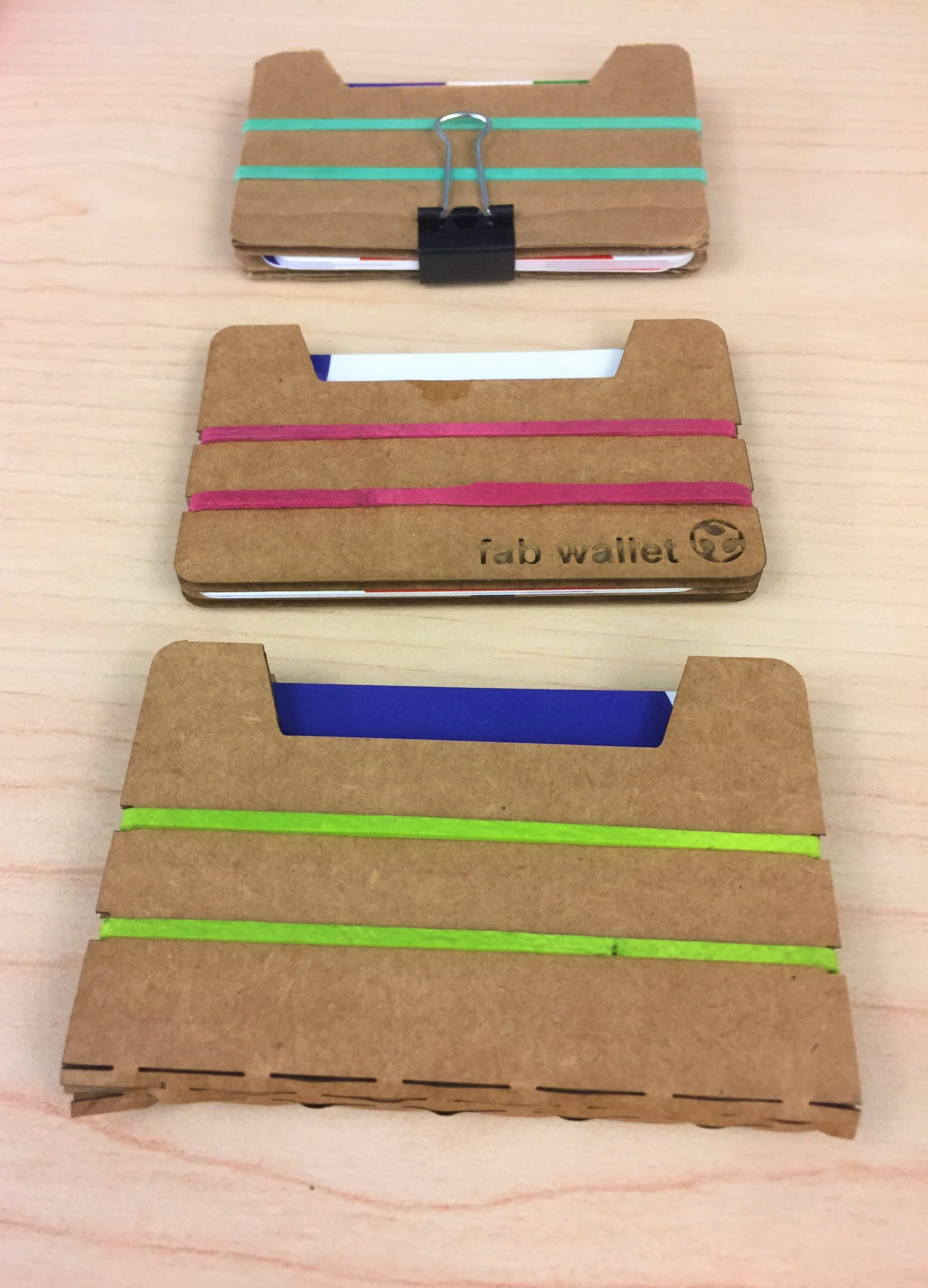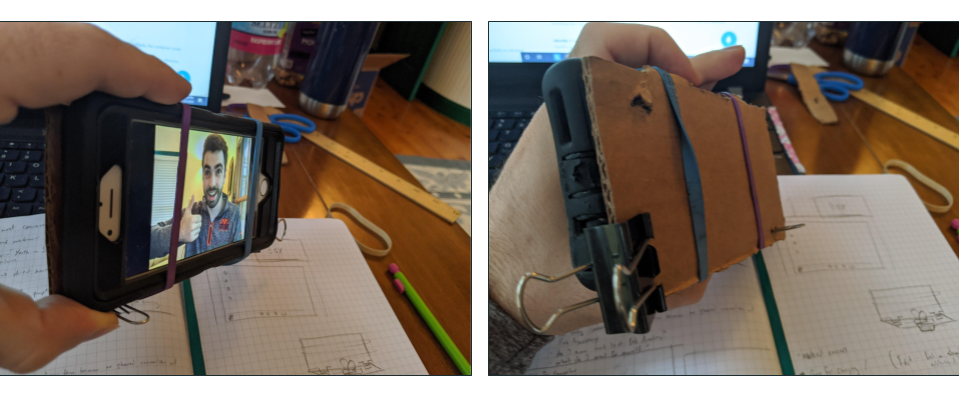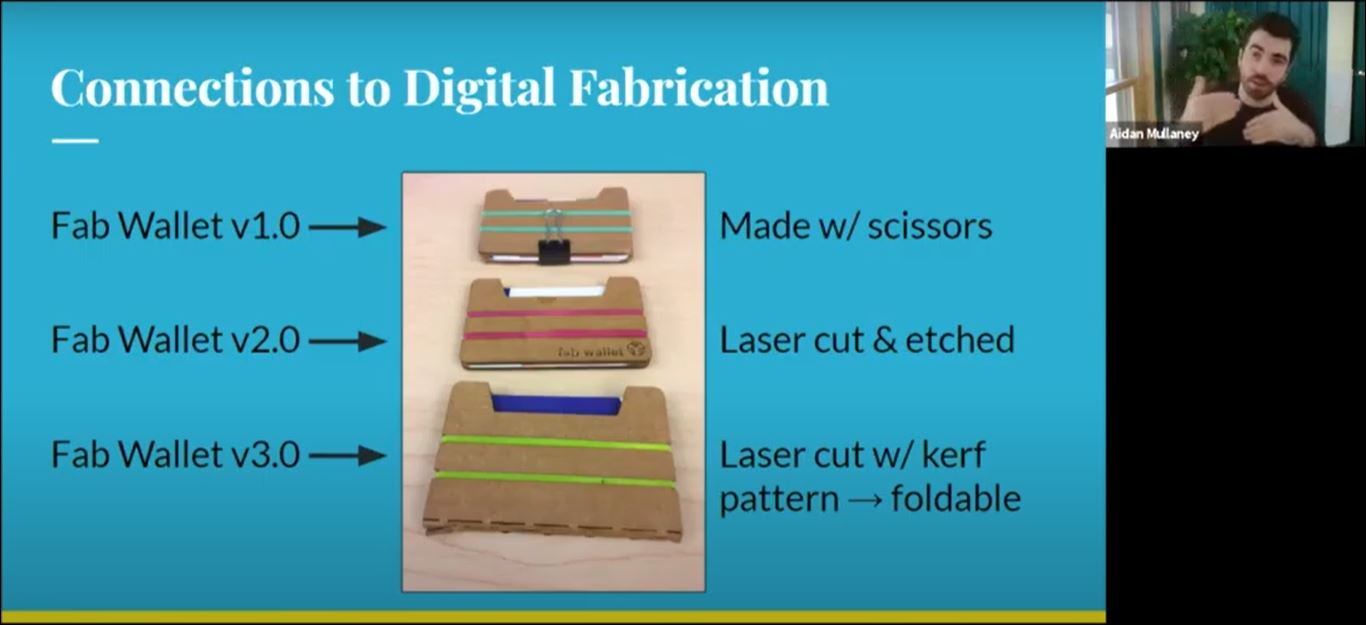 Access to educational tools has never been more challenging. Educators across the globe are thinking outside the box to engage their students with STEM content virtually. In the recent SCOPES-DF UNPLUGGED: Cardboard Container virtual workshop, participants were prompted to think about the box.
Access to educational tools has never been more challenging. Educators across the globe are thinking outside the box to engage their students with STEM content virtually. In the recent SCOPES-DF UNPLUGGED: Cardboard Container virtual workshop, participants were prompted to think about the box.
UNPLUGGED was developed by the Fab Foundation’s SCOPES-DF team in response to COVID-19. Through this series of virtual workshops, meet-ups, and webinars, the entire education team is providing support, expertise, and content to adults supporting student learning at home.
Facilitated by the Fab Foundation’s Alethea Campbell and Aidan Mullaney, attendees were challenged to create a container for their personal workspace out of household materials. The workshop introduced teachers and participants to the Engineering Design Process and the rapid prototyping technique. Panelists from this workshop included:
Brian Purvis – mobile Fab Lab educator from New Orleans, LA
Andrea Fields – civil engineer and Fab Lab manager from Cleveland, OH
Liz Whitewolf – Program Manager for SCOPES-DF from Pittsburgh, PA
Brian, with the help of his son, designed a board-game organizer using rubber bands and thumb tacks. Andrea, also with her child, created a file organizer with multiple compartments from cardboard, and Liz prototyped a head-mounted phone holder out of cardboard and popsicle sticks. Watch each of their approaches to the design process in this video from the virtual workshop. Fill out this survey to provide feedback on this lesson.

In addition to modeling the design process for all viewers and attendees, the three panelists provided helpful suggestions which educators can add when teaching this lesson and other hands-on learning experiences:
1. Consider the platform: allow students to complete the bulk of their design prior to joining a virtual meeting and use virtual workshops as a way to connect and share designs.
2. Throw away the material list: if materials are difficult to find or access, build in time for students to identify the materials they have and those they need to complete the activity.
3. Incorporate interactive student engagements: one idea is to add game mechanics to the Test, Evaluate, and Communicate steps of the design process.
4. Explore the problem further: engineer alternative solutions to the initial result. The second or third iterations may be better than the first.
5. Engage family members: problem-based learning encourages collaboration and working together on a project with parents can increase student’s interest in a subject.
Of all the comments received from this workshop, the most illuminating are that access to digital tools is unequal and teachers (as well as students) currently desire more STEM content away from the computer. Therefore, it is the goal of this lesson and all other UNPLUGGED lessons to provide fully analog alternatives to digital processes and continue to make digital fabrication techniques accessible to all.

